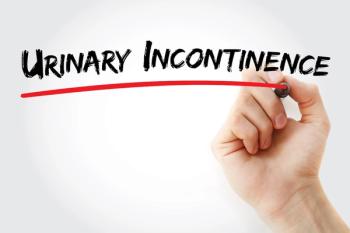
Chronic Opioid Therapy, Prescription Drug Use Linked With Increased Risk of Sleep Disorders, Frailty
Chronic opioid therapy was found to disrupt sleep and increase the risk of sleep disorders, while prescription drug use for pain and sleep exhibited an increased risk of frailty among users, according to 2 study findings stressing the need for heightened prescription education among providers for potential adverse risks.
Chronic opioid use was found to impede sleep efficiency and increase the risk of sleep disorder-related obstructed breathing, according to a position statement published yesterday in the American Academy of Sleep Medicine (AASM)'s Journal of Clinical Sleep Medicine.1
Researchers from AASM, the leading professional society dedicated to the promotion of sleep health, highlighted that while fatigue and disturbed sleep are common symptoms of chronic pain, chronic use of opioid therapy is known to disrupt sleep architecture and sleep stage distribution, which in turn, can cause or contribute to disturbed sleep, fatigue, and daytime sleepiness. Delineation of the root cause of these sleep-related disturbances, whether it is chronic pain or opioid therapy, has caused AASM to publish a position statement to clarify its stance on the issue.
AASM advocated against prescribing opioids for chronic pain, citing respiratory depression as a key factor in addition to sleep disruption and distribution. Chronic opioid use was related to not only isolated symptoms, such as snoring, but to sleep-related breathing disorders as well. These sleep disorders, characterized by abnormalities of respiration during sleep, included sleep-related hypoventilation, central sleep apnea, and obstructive sleep apnea. Researchers stressed the importance for medical providers to be aware of the risk of sleep disorder-related breathing among this demographic and advocated for appropriate screening and diagnostic testing of the associated sleep disorders.
However, researchers stated that 1 sleep disorder, restless legs syndrome, requires chronic opioid use as other therapies have failed to control symptoms. Eliminating opioid use altogether was also approached with caution, as “providers are often faced with the challenge of effectively managing the underlying disorder while also ensuring patient safety, which requires collaborative care,” said the researchers. To improve the health and well-being of patients with sleep-disordered breathing, the study authors recommended the use of an effective positive airway pressure modality.
Coauthor R. Nisha Aurora, MD, associate professor of medicine at Rutgers Robert Wood Johnson Medical School,
Prescription pills for pain, as well as sleep, could also expose patients to an increased risk of frailty, as an October study published by the Journal of the American Geriatrics Society found that regular use of co-prescribed drugs for pain and sleep increases frailty risk by 95% (co-use adjusted hazard ratio [sHR] = 1.95; 95% CI, 1.6-2.4).2
Researchers sought to examine incident frailty risks of analgesics, for pain relief, and sedatives for sleep, in older US adults who were not frail at baseline. The co-prescription of opioids and benzodiazepines have already been discouraged by clinical practices due to the risks of dizziness, falls, dependence, respiratory depression, and death, but research on co-prescriptions of nonopioid analgesics and non-benzodiazepine sedative-hypnotics in relation to incident frailty have not been conducted.
Data were derived from a longitudinal cohort containing self-reported prescription drug use for pain and sleep indications, covariates, and frailty and were analyzed for associations between prescription drug use and incident frailty:
- Study consisted of a large cohort (n = 7201) of community-living non-frail older adults age 65 to 104 (mean = 72, median = 70)
- Analyses adjusted for sociodemographic, other drug usage
Researchers found that in addition to the stark increase of frailty risk by the co-prescribed drugs, regular nonopioid analgesic use for pain exhibited a 58% (sHR = 1.58; 95% CI, 1.4-1.8) increased risk of frailty and regular non-benzodiazepine sedative-hypnotic use showed a 35% (sHR = 1.35; 95% CI, 1.1-1.6) increased risk.
Coauthor Juyoung Park, PhD, associate professor at Florida Atlantic University’s Phyllis and Harvey Sandler School of Social Work,
“Geriatric medicine societies, including the American Geriatric Society, have developed guidelines to help prescribers avoid potentially inappropriate prescribing, or PIP, which requires assessment of several types of PIP, including the benefits and risks associated with certain drug classes," said Park.
References
- Rosen IM, Aurora RN, Kirsch DB, et al. Chronic opioid therapy and sleep: an American Academy of Sleep Medicine Position Statement. J Clin Sleep Med. 2019;15(11):1671-1673.
- Cil G, Park J, Bergen AW. Self-reported prescription drug use for pain and for sleep and incident frailty. [published online October 24, 2019]. J Am Geriatr Soc. doi: 10.1111/jgs.16214.
Newsletter
Stay ahead of policy, cost, and value—subscribe to AJMC for expert insights at the intersection of clinical care and health economics.





























































